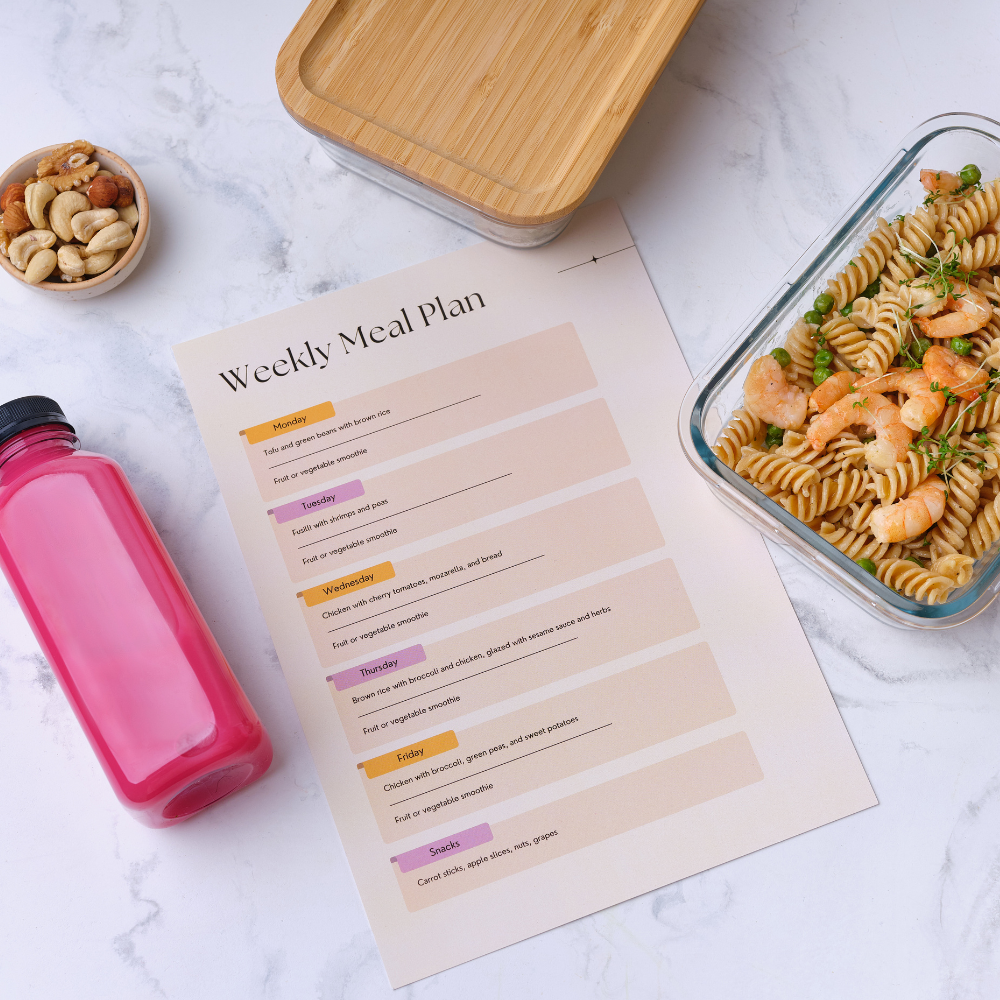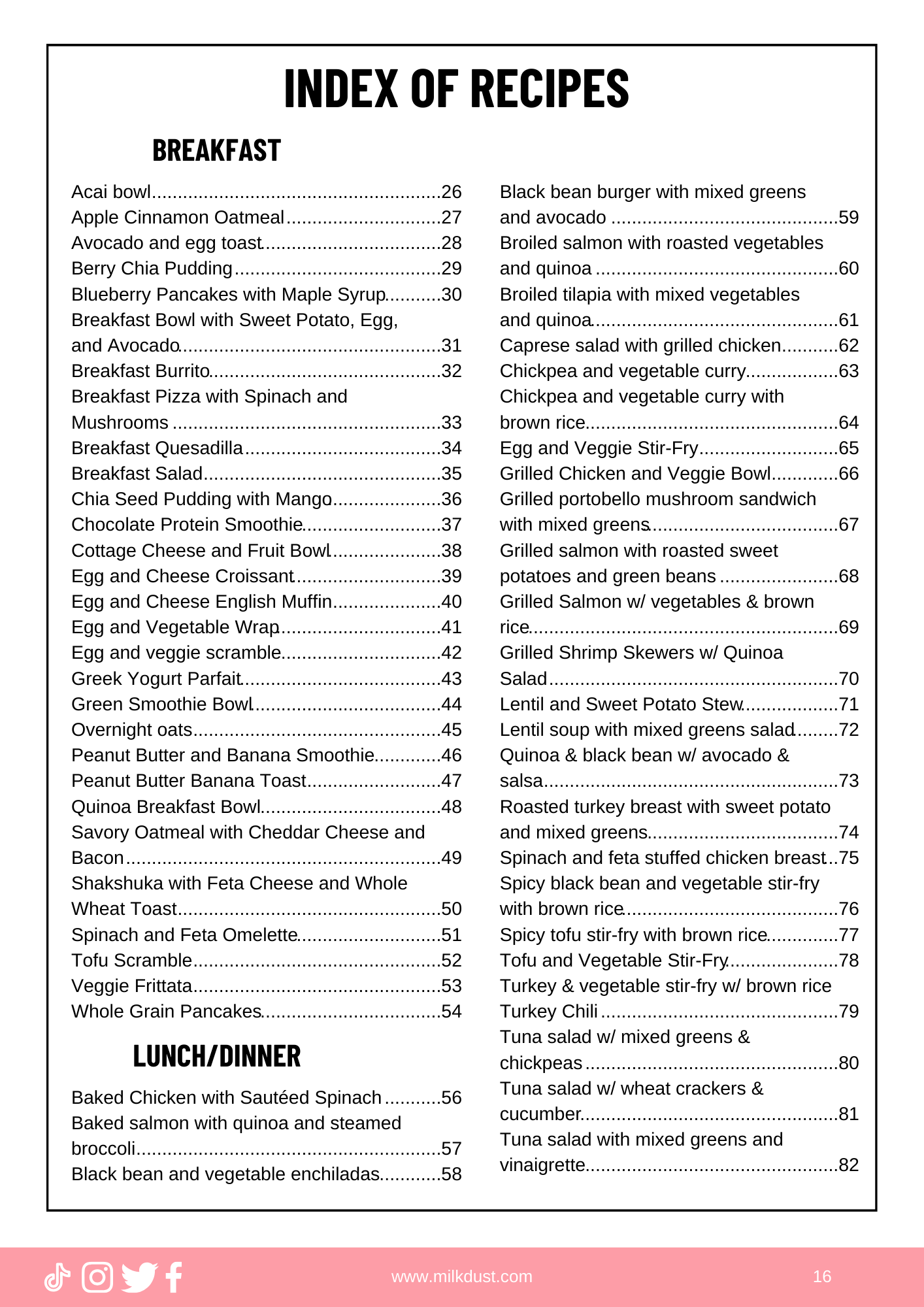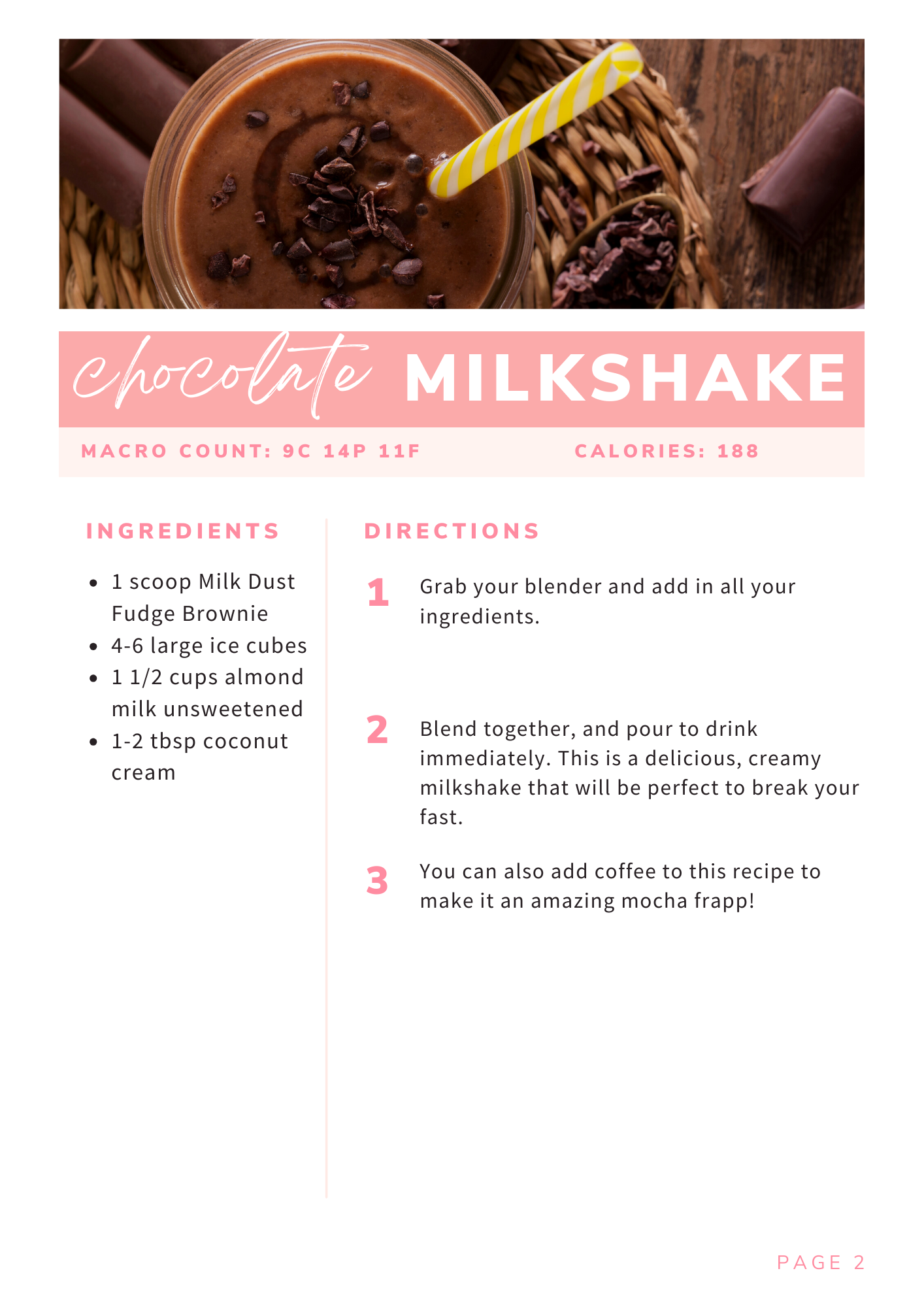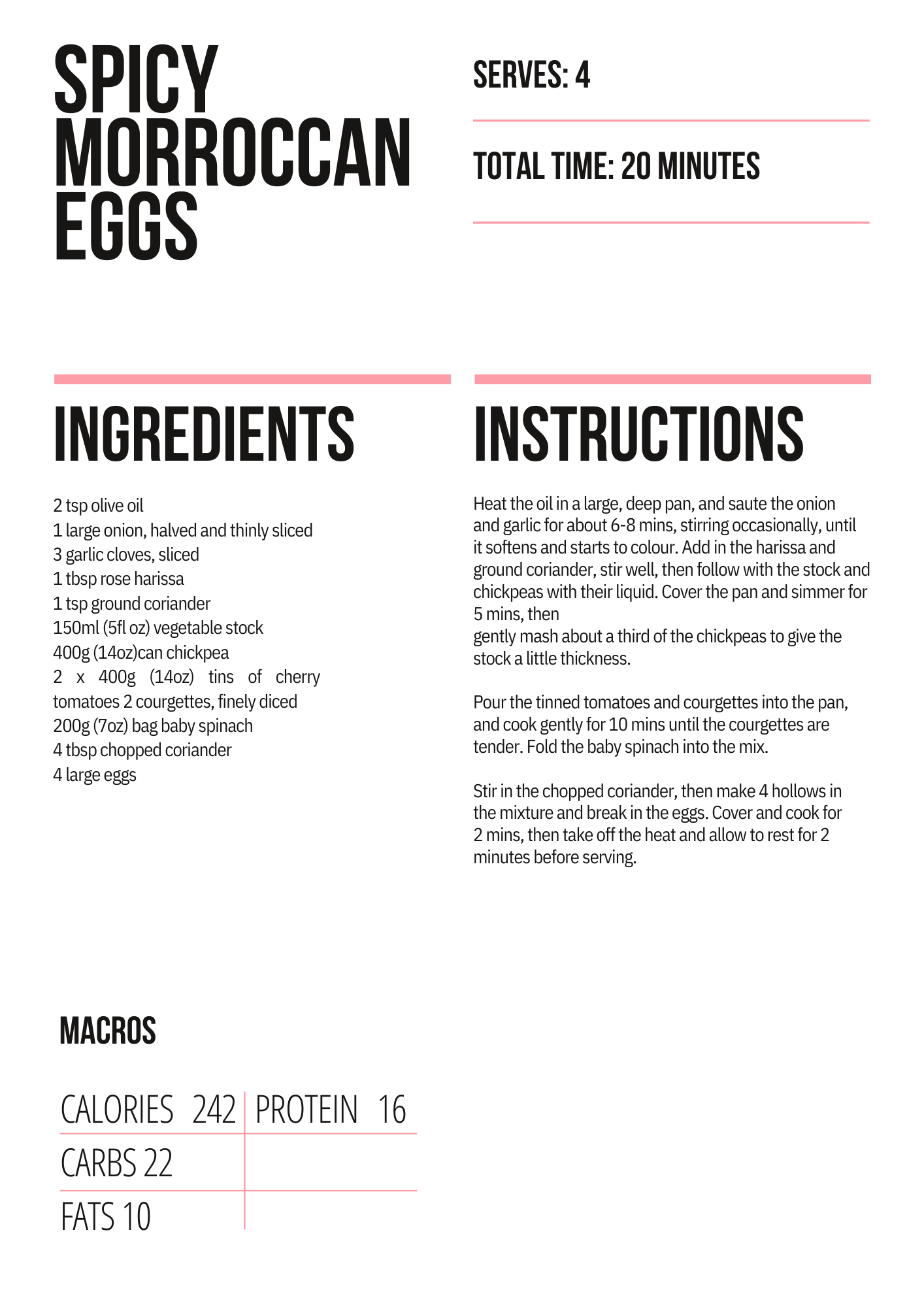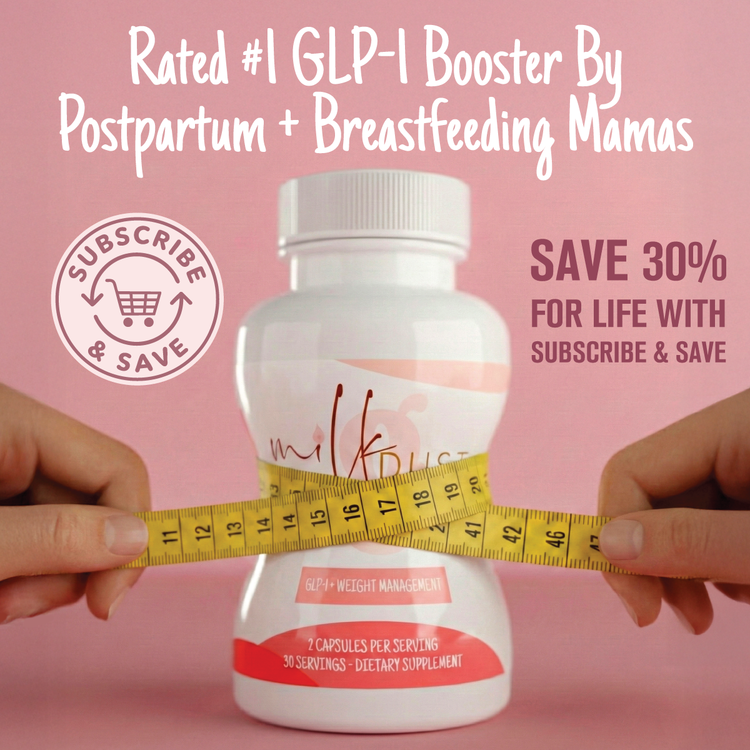Hi there, I'm Katie a Pre/Post Natal Fitness Specialist and Certified Nutrition Coach. I've been creating healthy breastfeeding meal plans for weight loss and milk production the past 8 years, and I specialize in nutrition for breastfeeding. Many mamas don't realize their breast milk, both the amount and quality is really dependent on nutritional intake. If mama is eating a healthy diet and providing her own body with the right nutrients, then her body will be able to keep up a health milk supply for baby. The challenge that many moms face is knowing what the right nutrients are, and sticking to those nutrient-dense foods. Nurition for breastfeeding is more complex than just eating whole grains, small amounts of healthy fats and leafy greens. Because making healthy food choices is a little more complicated for breastfeeding, I like to suggest breastfeeding meal plans to take the guess work out of what to eat. Breastfeeding meal plans make eating a balanced diet, full of specific foods that actually increase milk supply so much easier.

I created a great breastfeeding meal plan that is a free pdf download, so you know exactly what to do to get started. If you need more, I have additional meal plans you can grab here, so you can get started right away on eatint the right foods for your body to burn fat, but not lose any milk supply. One is a clean eating diet plan, that focuses on eliminating processed foods that are high in calories and low in nutrients, and the other one is a high protein meal plan if you are working out more, or like a lower-carb approach. Both are designed to increase THE RIGHT NUTRIENTS, so you won't lose your supply, but still say in a healthy calorie defecit to burn fat.
How to calculate the calories a woman needs when breastfeeding:
No matter what breastfeeding diet plan you follow, you will need to konw about how many calories you need to eat each day. When breastfeeding, your body does burn a little extra calories, but if you want to actually lose weight, then you shouldn't eat extra calories. If you want your body to use fat as fuel, then you need to find a good calorie count that makes you feel good, but also is lower than what your body is using each day. If these calories are full of healthy choices like fresh fruit, protein foods and green leafy vegetables, a new mom can function really well on lower calories.
The easiest way to determine caloric intake for weight loss while breastfeeding:
1. Establish your milk supply
Establishing your milk supply first, is really important. This will allow you to get your body in a rythm with baby, before you start tweaking your diet. You can also then figure out how many calories you are currently eating with a healthy milk supply, so you know what to go back to if you experience a drop in supply.
2. Track your caloric intake for at least 3 days
You need to track your normal caloric intake for a minimum of 3 days. This will tell you how many calories you are eating to be at the weight you are at. If you can track your calories for a full week even better. Divide your total calories by the number of days you tracked, so you can get a good average for each day. For example, if you ate 6000 calories in 3 days, your average is 2000 calories each day.
3. Reduce your calories by 250-500 a day
Yes, you can reduce your calories while breastfeeding. Depending on how much weight you want to lose, and how many calories you are currently eating, you can reduce your calories around 250 to 500 a day. If you are eating on the lower end of calories already, say 1500 a day, then you may only want to reduce your caloric intake by 250. If you are eating more, let's say 2800 a day, then you can reduce by 500. Pick a number, and stick to this for 1 week. See if you lose weight, or if you need to reduce more.
The important aspect of a meal plan is that it keeps you eating a variety of foods, and the recipes give you a lot of healthy options. A specific breastfeeding meal plan will also ensure you are getting the specific vitamins that are most important for breastfeeding. Some of these include vitamin b, vitamin c, protein, omega-3 fats, iron, vitamin a, and others. Let's get into two amazing breastfeeding diet plans for milk supply and weight loss.
I have a wonderful, free breastfeeding diet plan you can start with. It gives you an idea of what you might want in a diet plan, and can jump start you at no cost! It is a pdf that you get right away when you sign up, and hopefully it will help you get on your way to meal planning and losing weight without losing milk supply!
28-Day Breastfeeding Diet Plan for Weight Loss
This is one of my meal plans to help mamas stick to a healthy breastfeeding diet. It isn't too restrictive in terms of what you are eating, but it does put a large emphasis on eating clean. You get more carbs in this plan, like brown rice and sweet potatoes, in addition to lean meats for essential protein. Overall, when eating a cleaner diet, there are more carbs for energy, with a smaller amount of essential fatty acids. If you like a lower carb option, you will love the crush hunger and cravings breastfeeding meal plan. That one focuses more on protein at each meal, rather than just eating clean. This one has a full week by week plan to follow with recipes that will help you stay on track for eating clean, but also staying nourished for milk supply.
Crush Hunger + Cravings 28-Day High-Protein Breastfeeding Meal Plan
Some breastfeeding mothers struggle more with hunger, and focusing on a higher protein diet can really help reduce hunger. When you pair protein with high-fiber foods like fruits and vegetables, it can help you feel more full on less calories! If you are struggling with feeling hungry all the time, a higher protein meal plan is a great option to help with that! I have the recipe index below, so you can see what kind of recipes are included in this higher protein meal plan.
Milk Dust Macro Plan for Breastfeeding:
If you like to count macros, but aren't sure how to do that with breastfeeding, this is a great meal plan to help you! It doesn't have as many recipes, but it does go over how to count your macros, figure out what your macros need to be while breastfeeding, and it gets you started with a macro-focused meal plan and recipes! All the recipes have macros with them, so you can fit them into your own meal plan depending on what your macros need to be!
What are the benefits of a breastfeeding meal plan?
A well-structured meal plan can offer several benefits to breastfeeding mothers, helping them meet their nutritional needs and support both their own health and the health of their baby. Here are some of the key benefits of a meal plan for breastfeeding:
-
Adequate Nutrition: A meal plan for a breastfeeding mom ensures that a breastfeeding mother gets the essential nutrients her body needs. Proper nutrition is crucial for maintaining energy levels, recovering from childbirth, and supporting milk production.
-
Support Milk Production: Certain foods and nutrients, such as protein, calcium, iron, and healthy fats, are essential for lactation. A meal plan can help ensure that a mother consumes an adequate amount of these nutrients, which can promote healthy milk production.
-
Weight Management: Breastfeeding burns extra calories, which can help some women shed pregnancy weight. A well-balanced meal plan can help mothers manage their weight in a healthy way while providing enough calories to support milk production.
-
Nutrient Transfer to Baby: The nutrients a mother consumes are passed on to her baby through breast milk. A balanced meal plan helps ensure that the baby receives the necessary nutrients for healthy growth and development.
-
Hydration: Staying well-hydrated is crucial for breastfeeding mothers. A meal plan can include adequate fluids to help prevent dehydration, which can impact milk supply and overall health.
-
Improved Energy Levels: Caring for a newborn can be physically demanding, and breastfeeding requires additional energy. A meal plan that provides the right balance of macronutrients (carbohydrates, proteins, and fats) can help mothers maintain their energy levels.
-
Faster Recovery: Proper nutrition can aid in postpartum recovery by supporting tissue healing and replenishing nutrient stores that may have been depleted during pregnancy and childbirth.
-
Mood and Mental Health: Nutrient-rich foods can have a positive impact on a mother's mood and mental health. Consuming a variety of nutrient-dense foods can help reduce the risk of postpartum depression and anxiety.
-
Reduced Risk of Certain Health Issues: A healthy meal plan can contribute to a lower risk of certain health problems, such as osteoporosis and cardiovascular disease, which can be concerns for some postpartum women.
-
Better Sleep: Some foods, like those containing tryptophan (found in turkey and dairy products), can promote better sleep quality. Adequate rest is essential for new mothers.
-
Establishing Healthy Eating Habits: Creating a meal plan during the breastfeeding period can help mothers establish healthy eating habits that can be maintained long-term for their own well-being.
It's important for breastfeeding mothers to work with a healthcare provider or a registered dietitian to create a personalized meal plan that takes into account their specific dietary preferences, nutritional needs, and any medical conditions. Every woman's body is different, and individualized guidance can help ensure both mother and baby receive the best possible nutritional support during breastfeeding.
The best foods to include in your breastfeeding meal plan:
A well-balanced breastfeeding meal plan should include a variety of nutrient-rich foods to ensure both the mother and baby receive the essential nutrients they need. Here are some of the best foods to include in a breastfeeding meal plan:
-
Protein: Protein is crucial for tissue repair and milk production. Milk Dust is an AMAZING, breastfeeding-focused protein powder that actually increases milk supply! More on that below, but there aer some other great protein options too!
- Lean meats (chicken, turkey, beef, pork)
- Fish (especially fatty fish like salmon, trout, and sardines for omega-3 fatty acids)
- Eggs
- Dairy products (Greek yogurt, cottage cheese)
- Legumes (beans, lentils, chickpeas)
- Tofu and other soy products
-
Whole Grains: These provide energy and fiber.
- Whole wheat bread and pasta
- Brown rice
- Quinoa
- Oats
- Barley
-
Fruits and Vegetables: Rich in vitamins, minerals, and antioxidants.
- Dark leafy greens (spinach, kale)
- Berries (blueberries, strawberries)
- Citrus fruits (oranges, grapefruits)
- Avocado
- Sweet potatoes
- Broccoli
- Carrots
-
Healthy Fats: Essential for brain development and overall health.
- Nuts (almonds, walnuts)
- Seeds (flaxseeds, chia seeds)
- Olive oil
- Fatty fish (salmon, mackerel)
- Avocado
-
Dairy or Dairy Alternatives: Good sources of calcium and vitamin D.
- Low-fat milk (if tolerated)
- Fortified plant-based milk (soy, almond, oat)
- Cheese
- Yogurt
-
Iron-Rich Foods: Important for both mother and baby.
- Lean red meat
- Fortified cereals
- Spinach and other leafy greens
- Lentils and beans
-
Fluids: Staying hydrated is crucial for milk production.
- Water
- Herbal teas (non-caffeinated)
- Milk (dairy or plant-based)
- Homemade smoothies with fruits and yogurt
-
Fiber-Rich Foods: To support digestive health.
- Whole grains
- Fruits
- Vegetables
- Legumes
-
Folic Acid Sources: Essential for baby's development.
- Leafy greens
- Citrus fruits
- Beans
- Fortified cereals
-
Hydration: Drink plenty of water throughout the day to support milk production. Breastfeeding can increase your fluid needs, so pay attention to your body's cues for thirst.
-
Avoid Excessive Caffeine and Alcohol: While moderate caffeine consumption is generally considered safe, excessive caffeine and alcohol intake can affect both you and your baby. Limit these substances if you consume them.
THE MILK DUST LACTATION PROTEIN BLEND:
Organic Brown Rice Protein:
Brown rice has many benefits for breastfeeding, and it can actually help increase milk supply. According to Babyment, "It is healthy to eat brown rice while you are breastfeeding. First, It has hormone stimulants which boost lactation. That can help increase the secretion of breast milk. Second, brown rice contains chemical that can prevent postnatal depression." The brown rice protein can help you achieve your healthy milk supply, while also helping you get in the proper nutrition.
Organic Pumpkin Seed Protein:
Pumpkin seeds are particularly high in zinc, minerals and good fats that are an amazing superfood for lactation. Pumpkin seeds are also high in fiber and protein, which are a great way to feel full and nourished at the same time.
Organic Chia Seed Protein
Chia seeds are also high in healthy fats, which are important to the quality of your breast milk supply. By offering various seed proteins, there's a wide variety or minerals and healthy fats to increase the nutrient-density of the protein blend. The more nutrients the better for lactation. Chia seeds are iron-rich foods, believed to promote breast milk supply and are also good calcium sources and protein sources along with fats – all of which are essential for breastfeeding mothers.
Organic Flax Seed Protein:
This diverse blend of protein provides as much nutrients as possible, while also helping achieve the daily protein intake goal that is helpful for producing milk, feeling full and also losing the baby weight.
Also read: #1 RATED LACTATION PROTEIN POWDER FOR BREASTFEEDING MAMAS
MILK DUST IS CERTIFIED SAFE BY THE NATURAL AND NON-PRESCRIPTION HEALTH PRODUCT DIRECTORATE (NNHPD) OF HEALTH CANADA
In order to obtain an NPN, you must submit the exact amounts of every ingredients, certificates from those suppliers, and the Natural and Non-Prescription Health Product Directorate (NNHPD) of Health Canada reviews every single ingredient in the formula for safety, efficacy and overall quality.
Milk Dust achieved an NPN from the NNHPD and is determined safe, effective, and of high quality. This is a big deal, and verifies the safety of Milk Dust for consumption in the US. The US has much lower standards on products, where Canada strictly regulates any products in the health and wellness field. You can read more about the process, but it is strict and focused on only certifying products that are healthy and safe for consumers.
I hope to pursue more certifications for Milk Dust, to ensure the highest qualities to our customers, and I know I still drink Milk Dust as a nutritional supplement and protein powder 1.5 years after breastfeeding. It is an amazing product that gives your body so much, and you can trust that there's a mom just like you behind the formulation.

